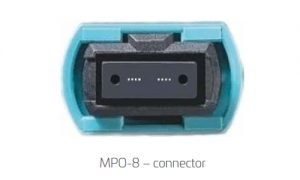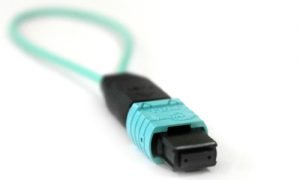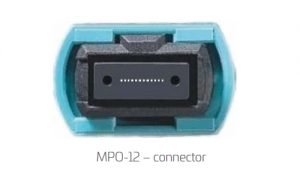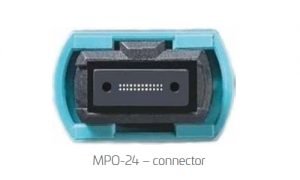MPO / MTP Fiber Optic Cables
MPO(Multi-fiber Push On)connector was originally developed in an attempt to reduce the amount of time required for fusion splicing individual connectors. The MTP connector is a high performance MPO connector in complete compliance with all MPO connector standards. The basic MPO trunk cables are available in 8, 12 and 24-fiber
variants. These MPO systems have evolved over time and now provide support for a large variety of network topologies.
Multimode MPO / MTP fiber cables are intended to carry multiple signals at once, typically have flat ends. Single mode MPO/MTP fiber cable is designed to carry only one signal with angled ends to minimize back-reflection, increasing the bandwidth exponentially. we have both female type and male type MTP/MPO connectors. the MTP / MPO fiber patch cables jacket are Mini-Core Plenum (OFNP), Mini-Core Riser (OFNR), Mini-Core Low Smoke Zero Halogen (LSZH) types optional. the optical fiber types available is G652D OS2 single mode, G657 single mode bend insensitive, multimode OM1, OM2, OM3, OM4 and OM5.
MPO Connector Polarity
The ANSI/TIA 568-3.D, (Optical Fiber Cabling and Components Standard, October 2016) defines three pinning or types for multi-fiber array systems: Method A, B and C. While one method is not preferred over another, the standard recommends that you choose a method in advance and use it throughout your installation. To maintain the proper polarity, there are three connectivity methods—A, B, C—that mirror the cable types. Each polarity method handles the transition from transmit to receive in a different manner.
- Method A, straight-through, is the most commonly used approach. It is pin 1 to pin 1 and uses Method A (key-up to key-down) MPO connectors.
- Method B is a crossover method (pin 1 to pin 12) and uses method B (key-up to key-up) MPO connectors.
- Method C uses flipped pairs (pin 1 to pin 2) and method A (key-up to key-down) MPO connectors. It does not offer a migration pathway to 40-/100-GbE.
MPO-MPO Fiber Optic Patch Cord Types
MPO/ MTP Fiber Optic Cable FAQs
- IEC 61754-7-1 and IEC 61754-7-2 are the commonly cited standards for MPO connectors internationally
- TIA-604-5, also known as FOCIS 5, is the most common standard cited in the US
- Inspect single-fiber and multifiber cables using the same tool by simply switching the adapter
- Take advantage of a slim design to easily access recessed connectors and dense panel settings
- Get an automated analysis of all fibers or multifiber cables and obtain a clear pass-or-fail result according to your testconfiguration
 EN
EN ES
ES DE
DE



